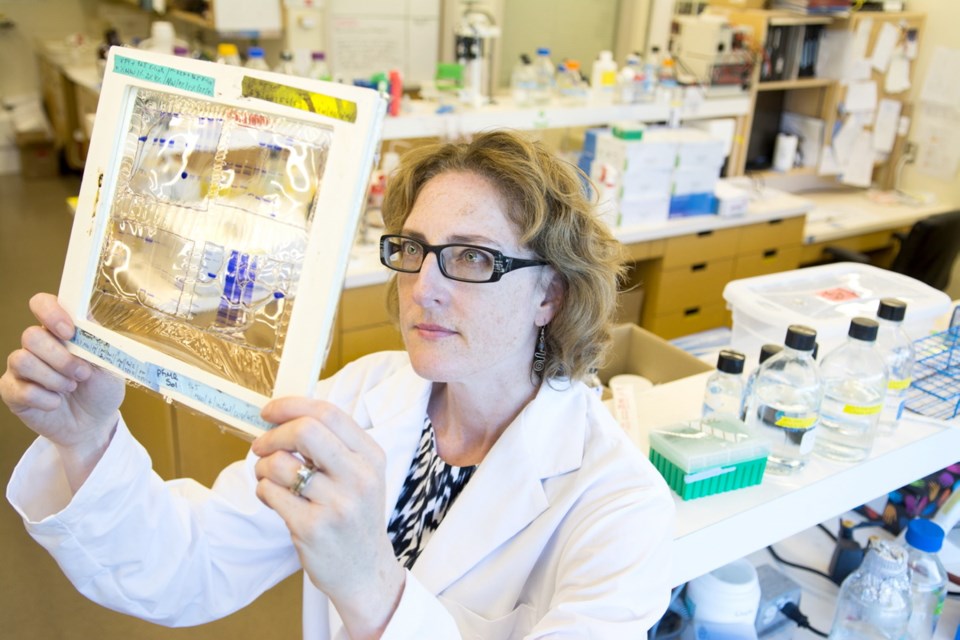A University of Victoria microbiologist and her American colleague are looking for a vaccine to prevent syphilis, a venereal disease on the rise worldwide.
UVic’s Caroline Cameron, a professor of biochemistry and microbiology, is joining with University of Washington’s Sheila Lukehart, a professor of medicine and global health, to develop a vaccine to stop syphilis before it gets started in a body.
“It’s a preventive treatment, not a cure,” Cameron said.
She said the disease is treated effectively, when caught early, with penicillin. Condoms are promoted as the most effective prevention. But treatment and condoms are not wiping out the disease, so a vaccine would be helpful.
Cameron said her lab is the only one in Canada working on syphilis at the basic science level. Interest seems to have dropped off to the point where only about five labs in world are examining it.
The number of syphilis cases, however, is growing. In B.C., from 2005 to 2014, infections increased 90 per cent. In the U.S. over the same period, the number of cases rose 128 per cent.
According to the B.C. Centre for Disease Control, the province recorded 192 new cases of syphilis in the first four months of this year. In the same period last year, it recorded 141.
Syphilis is a disease caused by a spiral-shaped bacterium, usually spread through sexual contact. The disease follows four phases: primary, secondary, latent and tertiary.
In the primary phase, a lesion appears within three to 90 days. Its surface is teeming with the bacterium and it is known as a chancre.
In the secondary phase, a rash often erupts, teeming with the bacteria. Left untreated, the disease enters a latent phase, with few visible symptoms, that can last years.
In the tertiary phase, the effects become obvious. Lesions and disfiguring lumps, called “gummas,” can appear. And in the days before antibiotics, infected people could lose extremities such as noses and fingers.
It can also damage most organs, including the heart, liver, lungs and brain, causing delusions and behavioural problems.
Cameron said the syphilis bacterium moves through a person’s body with a spiral motion, cork-screwing its way into organs and muscles.
It’s one of the few bacteria able to cross the blood/brain barrier. It can also cross the placenta in pregnant women to infect a baby before birth to cause often fatal congenital syphilis, also a growing problem.
Cameron said her work is taking aim at the bacterium’s ability to spread through the body.
Meanwhile, the University of Washington is working to prevent the initial formation of the chancre.
Cameron said it’s hoped by combining the UVic work with that of the University of Washington, the scientists can develop a “vaccine cocktail” to prevent the disease from getting started.
The scientists hope to be ready to progress to clinical trials in four years.
Cameron said she can’t be certain why syphilis appears to be on the increase. But she noted most of the reported syphilis cases in B.C. involve men-to-men sexual contact.
She wonders if the drug therapies that keep HIV from developing into full-blown AIDS have caused some people to relax about the use of condoms.
“I wonder, if you have got HIV, does it increase your susceptibility to getting syphilis?” she said.
“I think there is a real link between the two diseases that hasn’t really been studied.”



